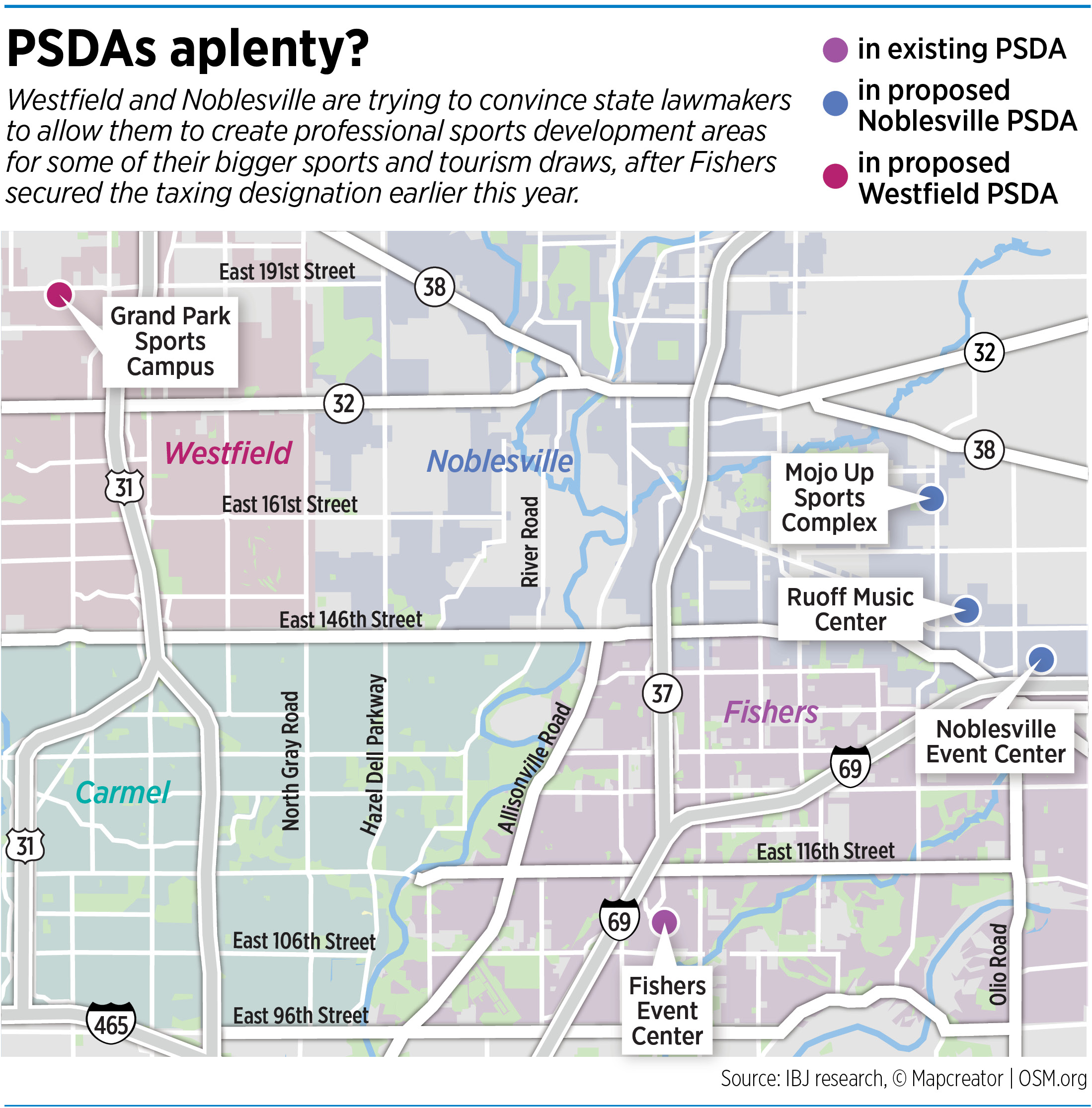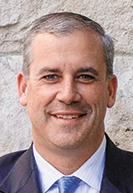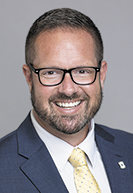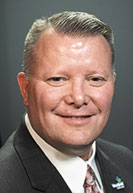Subscriber Benefit
As a subscriber you can listen to articles at work, in the car, or while you work out. Subscribe NowTwo Hamilton County cities trying to cash in on their efforts in sports tourism are set to ask state lawmakers to change the rules that govern how and when cities can benefit from taxes generated by sports-related projects.
Noblesville and Westfield officials told IBJ they are in early conversations with legislators about amending rules for the state’s professional sports and convention development area tool, which captures state sales and income tax revenue. The aim: Allow them to create their own districts that complement similar efforts in Fishers, Indianapolis, Fort Wayne and South Bend.
The requests would be tied to Noblesville’s planned event center and Innovation Mile economic district—a stretch between East 141st Street and Interstate 69, east of Olio Road—and Westfield’s 400-acre Grand Park Sports Campus.
While any proposed sports district (known as a PSDA, an acronym for professional sports development area, its former name), requires a series of approvals from the state, counties are generally limited to one each. Already, lawmakers have made an exception in Indianapolis, which is working to finalize a second PSDA to support the development of a proposed Major League Soccer stadium.
Fishers scooped up Hamilton County’s designation for the area surrounding the Fishers Event Center during the 2023 session, with the district’s creation finalized late last year.
“When you have a place like Hamilton County that’s experiencing rapid growth and development and has for a number of years now, it certainly seems like that area of the state can sustain multiple districts,” said Matt Greller, CEO of AIM, formerly the Indiana Association of Cities and Towns. AIM is not involved in Noblesville and Westfield’s joint effort to secure the changes.
Sports districts allow communities to capture state income and sales taxes, as well as some local taxes, which can include the income and innkeepers taxes, from designated parcels within a one-mile radius of a project developed to serve one or more professional sports teams.
The 7,000-seat Fishers arena will be home to the Indy Fuel hockey team, Fishers Freight indoor football team and Indy Ignite volleyball team, all of which compete in professional leagues to varying degrees.
Greller said it doesn’t make sense to cap the number of sports districts in counties where more than one is possible. “The leadership in those communities can make that decision,” he said. “And the responsibility is on them. It’s just common sense to move forward in a way that lets the local governments make that decision.”
Sports districts don’t allow for an unlimited capture of state tax revenue within their boundaries. The state establishes a revenue cap—in the case of Fishers, it is $2 million per year, while the soccer-related district in Indianapolis allows for up to $9.8 million in tax revenue to be captured to pay off bonds related to the project. The limit varies elsewhere across the state, as well. Sports districts also capture only new tax revenue, not money already being generated within the designated area.
‘Local flexibility’
Noblesville hopes to use a sports district to pool new state and local tax dollars from attractions like Hamilton Town Center, Ruoff Music Center and the new Noblesville Event Center to fund future development in its Innovation Mile district, which the event center will anchor. The facility will be home to the Indiana Mad Ants basketball team, a developmental but professional affiliate of the Indiana Pacers.
Noblesville Mayor Chris Jensen said the funds generated by a professional sports development area would specifically be put toward future projects within the arena district, like hotels or apartments, as well as infrastructure within the Innovation Mile stretch. Innovation Mile is intended to attract life sciences, health, and research and development companies over the next decade, plus provide public amenities, retail, restaurants, housing and entertainment offerings.
Jensen said whether the city is employing a PSDA or a tax-increment-financing district—a mechanism that captures new property tax revenue—the focus is in “reinvesting back into that area” from which the dollars are being diverted.
“It allows for local flexibility around opportunities like this,” he said.
He said the proposed Noblesville projects reflect the state’s increasing focus on quality-of-life initiatives and growing the state’s population and economy.
 Jensen said the creation of additional sports districts would contribute to a larger central Indiana strategy of emphasizing sports, with Indianapolis serving as the central pillar and areas like Westfield, Noblesville and Fishers serving as nodes.
Jensen said the creation of additional sports districts would contribute to a larger central Indiana strategy of emphasizing sports, with Indianapolis serving as the central pillar and areas like Westfield, Noblesville and Fishers serving as nodes.
Each of Hamilton County’s state legislators is aware of the cities’ plan to go to the Legislature, Jensen said. That includes House Speaker Todd Huston, a Republican who represents the northern and western portions of Hamilton County (including the area where Noblesville hopes to establish its sports district). A representative for Huston did not respond to multiple requests for comment for this story.
The cities are also working closely with Hamilton County Tourism Inc. to procure studies to show how much funding would be generated by the districts over a 30-year period, the general length PSDAs are kept in place. The tourism group has hired Chicago-based Hunden Partners for the analysis. Hunden conducted the financial analysis for Indianapolis’ soccer stadium PSDA proposal, which is under consideration by the Indiana Finance Authority.
“We are helping to provide a strategy and research for this effort,” said Karen Radcliff, chief strategy officer for Hamilton County Tourism and director of the Hamilton County Sports Authority. “We’re working with [Hunden] to understand the market and what might be possible so that any kind of request for a PSDA is rooted in data and research.”
A broader definition?
Westfield is also seeking changes in state law after earlier this year unveiling ambitious plans to create a year-round tourism destination that offers retail, housing, entertainment spaces, a boardwalk, a canal and an indoor ski facility. The city has also announced plans to build a 10,000-seat championship stadium at Grand Park in the coming years.
According to Scott Willis, the first-term mayor of Westfield, the city would like to create a sports district that includes each of those projects. He said a preliminary analysis by Hunden indicates the district could generate about $118 million in tax revenue over its lifetime. That includes $62 million that would be diverted from taxes that otherwise would have gone to the state. But the analysis found that the state would still collect some $446 million in new tax revenue from the district, thanks to the cap that limits what could be diverted.
Willis said that although Westfield’s Grand Park Sports Campus is largely a youth sports mecca, the city could qualify for a professional sports district because the park is also home to the Indianapolis Colts training camp as well as the training facilities for the Indy Eleven men’s and women’s soccer teams. State law doesn’t specify that districts can be created only where professional sports are contested, although Willis acknowledged that its use for training facilities might be contested.
So far, he said, the city is “not getting pushback” on its belief that Grand Park would qualify under the definitions of such a district. However, he added, the state law should be expanded to make clear it can apply to more than simply projects or venues related to sports games.
“I do believe, when you look at the big picture of what a PSDA is for, whether it’s the Indianapolis Colts, the Indy Eleven, or even the Palladium in Carmel, we have attractions in Indiana that bring out-of-state tourists into the community,” he said. “There’s lots of things I think fit into the world of tourism. I’d almost rather see it be called a tourism district versus a sports district. I think sports is just a little narrow-minded in terms of what it can be. But I’m not sure if the Statehouse is looking at it through that lens or not.”
The next legislative session will start in earnest in January and is expected to run through April.•
Please enable JavaScript to view this content.




